The Veiltail Betta is a highly popular freshwater fish species, known for its magnificent colors and long, flowing fins. It is one of the many different species of betta fish. In this guide, National Park Aquarium will list the distinctive features of the Veiltail Betta in terms of color, appearance, breed, and how to keep your betta fish healthy.
Quick Overview About Veiltail Betta
| Feature | Information |
| Common Names | Veiltail Betta, Betta splendens (Veiltail variety) |
| Scientific Name | Betta splendens |
| Adult Size | 2.5 to 3 inches |
| Lifespan | 3 to 5 years |
| Family | Osphronemidae |
| Origin | Southeast Asia (Cambodia, Thailand) |
| Temperament | Aggressive |
| Compatibility | Low; Best kept alone |
| Tank Mates | Few options; Snails, some shrimp |
| Minimum Tank Size | 5 gallons |
| Habitat | Freshwater; slow-moving waters |
| Color | Various (Blue, Red, Purple, etc.) |
| Skin Type | Scales |
| Care Level | Moderate |
| Breeding | Bubble-nest breeder |
| pH Level | 6.5 – 7.5 |
| Water Hardness | Soft to moderately hard |
| Temperature | 76-82°F (24-28°C) |
| Diet | Carnivorous |
| Prey | Insects, smaller fish (in the wild) |
| Favorite Food | Bloodworms, brine shrimp |
What Is a Veiltail Betta Fish?
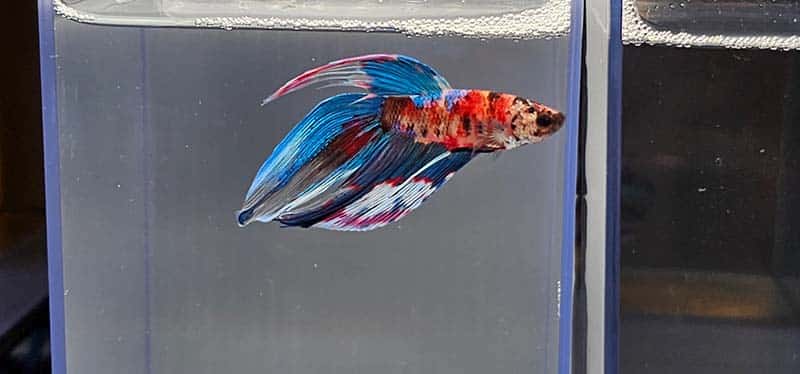
The Veiltail Betta stands out as one of the frequently spotted varieties in the Betta family, known scientifically as Osphronemidae. Often found gracing home aquariums, their allure remains undeniable despite the emergence of newer Betta tail types, such as the Crowntail or Halfmoon. These newer additions might have swayed some enthusiasts, but the Veiltail Betta’s simplicity in breeding ensures its continued desirability.
Veiltail Betta Temperament
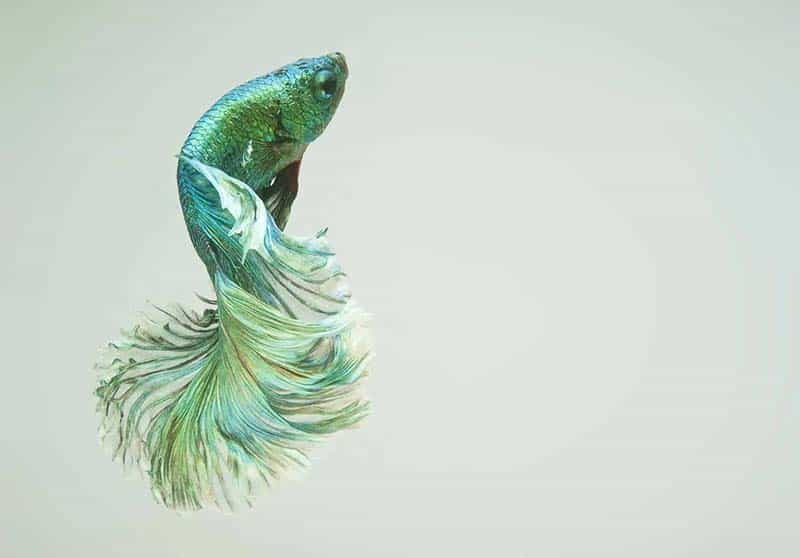
While the Betta species is generally associated with a feisty attitude, the Veiltail variety breaks that mold by exuding a calm, harmonious, and gentle demeanor. However, an essential aspect to remember is their territorial nature. As with other Betta fish, male Veiltails have an innate drive to defend their domain, which means they may become aggressive when another male enters their territory.
This natural behavior underscores the importance of understanding and respecting their space, ensuring a serene and stress-free environment for these beautiful aquatic beings.
Appearance Of Betta Veiltail Fish
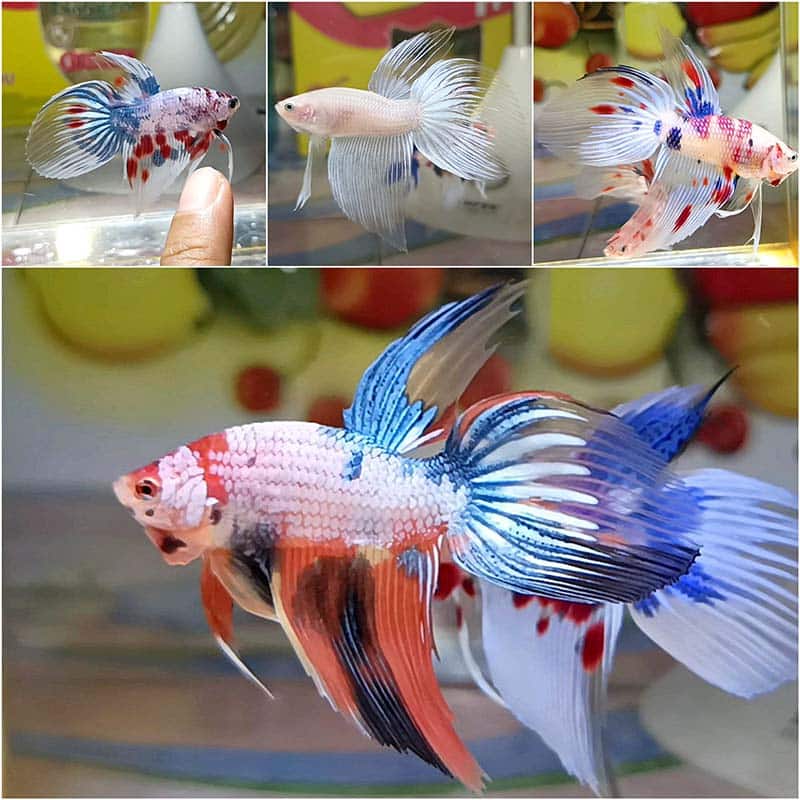
A standout feature of this variety is its beautifully elongated tail. This tail gracefully arcs, flows, and gently hangs just behind the caudal peduncle—the juncture where the tail and body meet.
But their appeal isn’t limited to just their tails. Veiltails present an extensive palette of colors, adding an array of hues to any aquarium setting. Given that their tail’s genetic trait is dominant, budding aquarists find them a rewarding choice when delving into breeding.
A little distinction between the genders: male Veiltails are often the showstoppers, boasting vibrant colors and longer, more pronounced tails. On the other hand, female Veiltails, while equally enchanting, often sport a more muted palette and have comparatively shorter tails and fins.
Veiltail Betta Fish Varieties & Colors
This exquisite fish can be seen flaunting a myriad of vivid hues. Predominantly, they shimmer in striking shades of royal blue and enchanting turquoise, akin to jewels beneath the water’s surface.
But the Veiltail’s charm doesn’t stop there. As you delve deeper into this betta fish varieties, you might encounter specimens glowing in the lush tone of emerald green or exuding the warmth of fire-engine red. Some even dance in gleams of bright yellow, spirited orange, or the mysterious depths of deep purple.
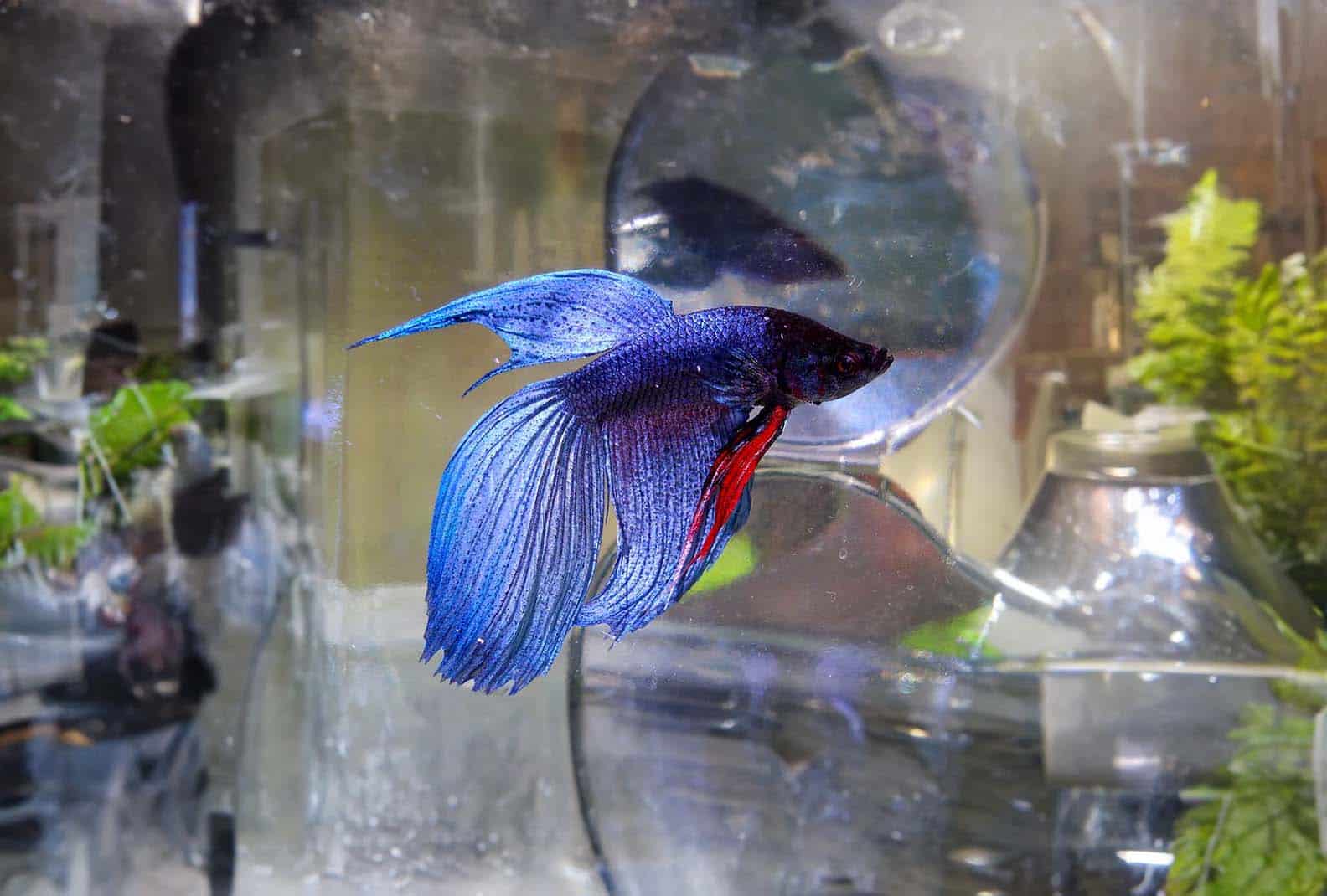
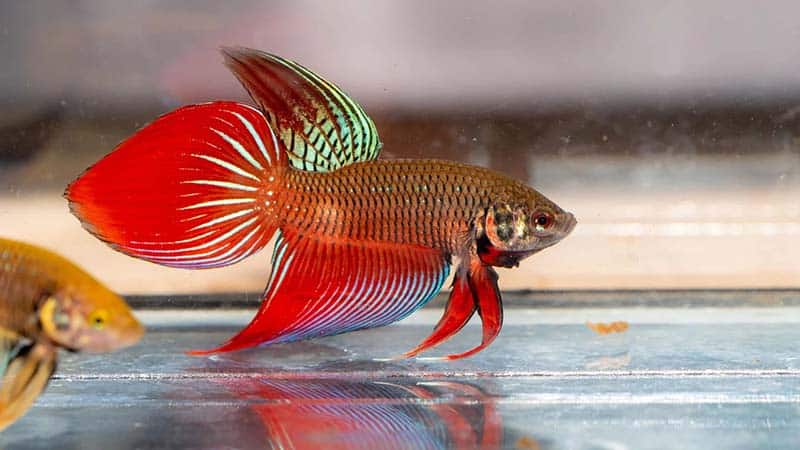
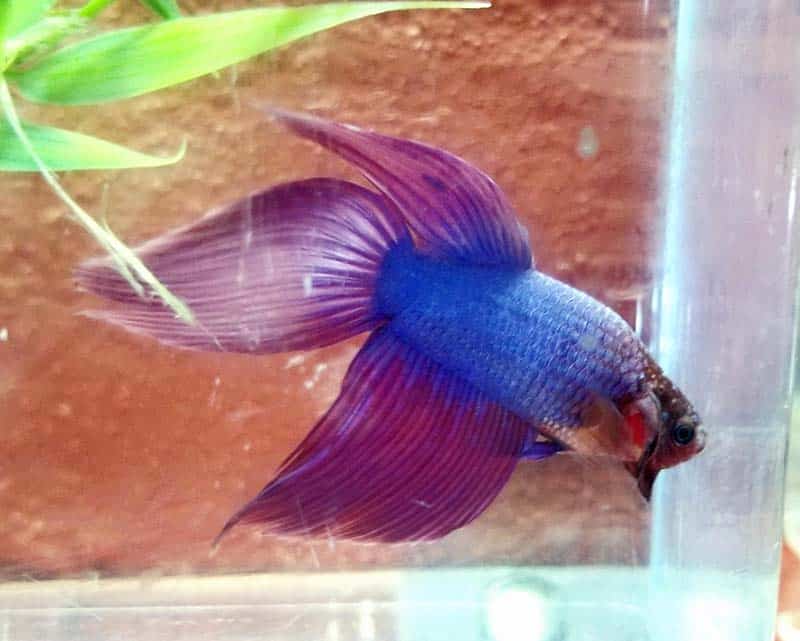
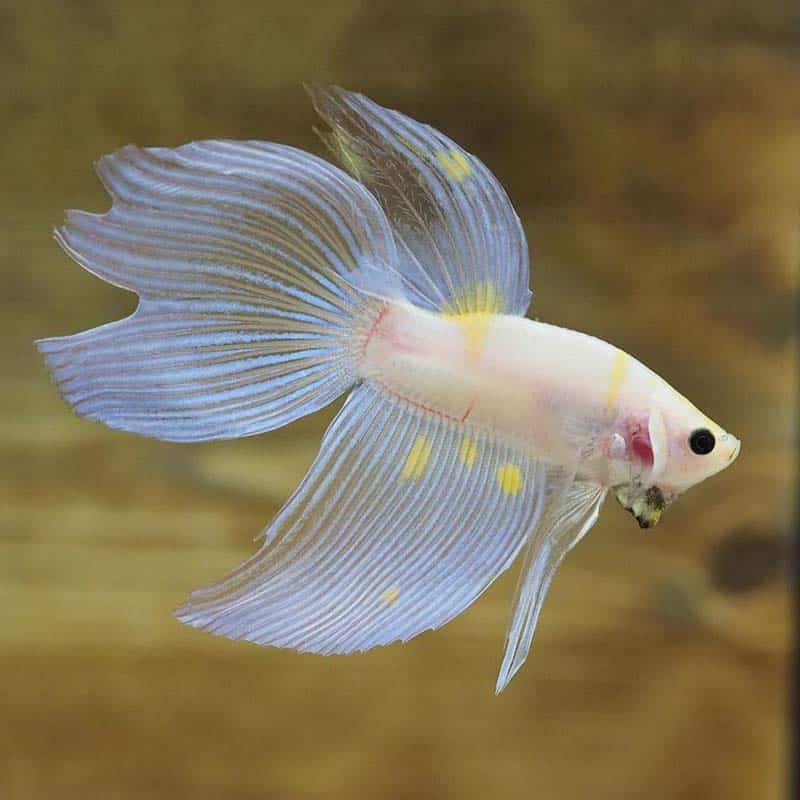
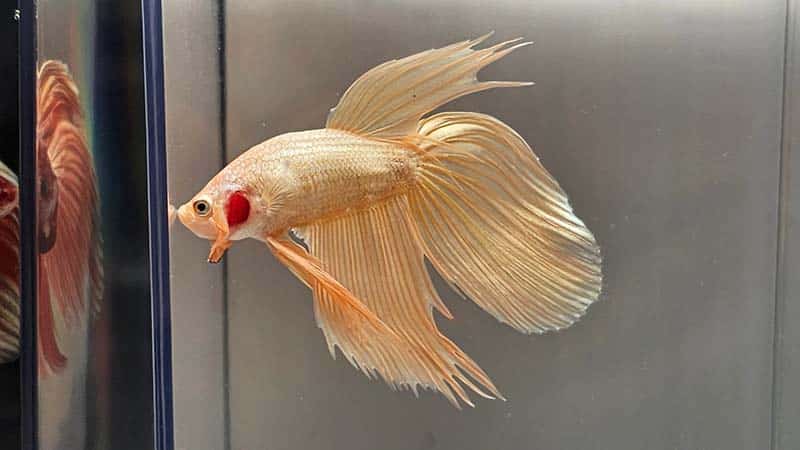
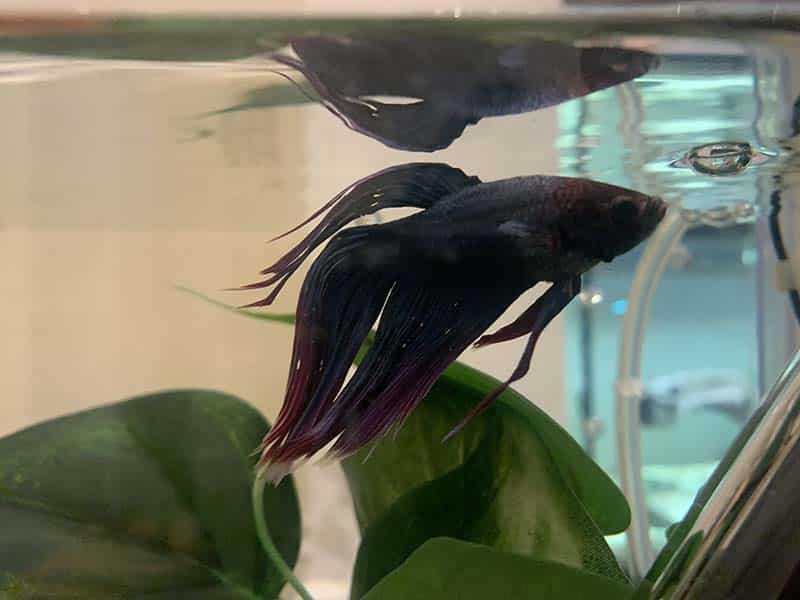
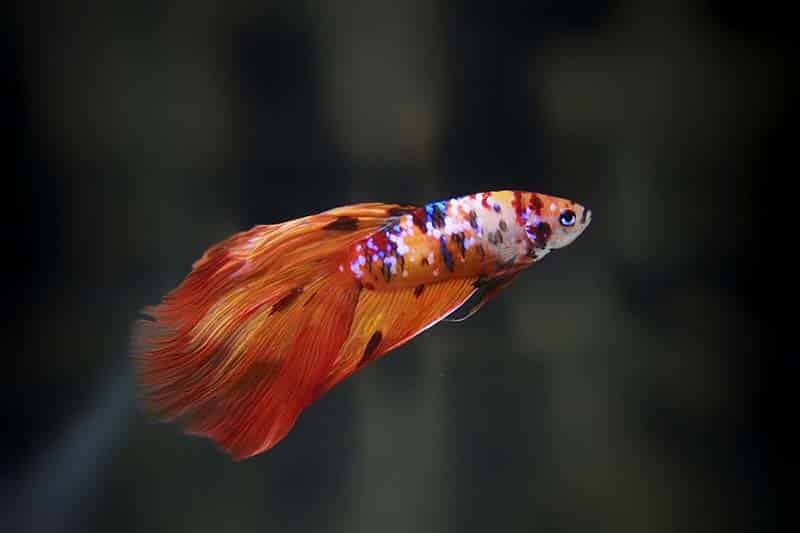
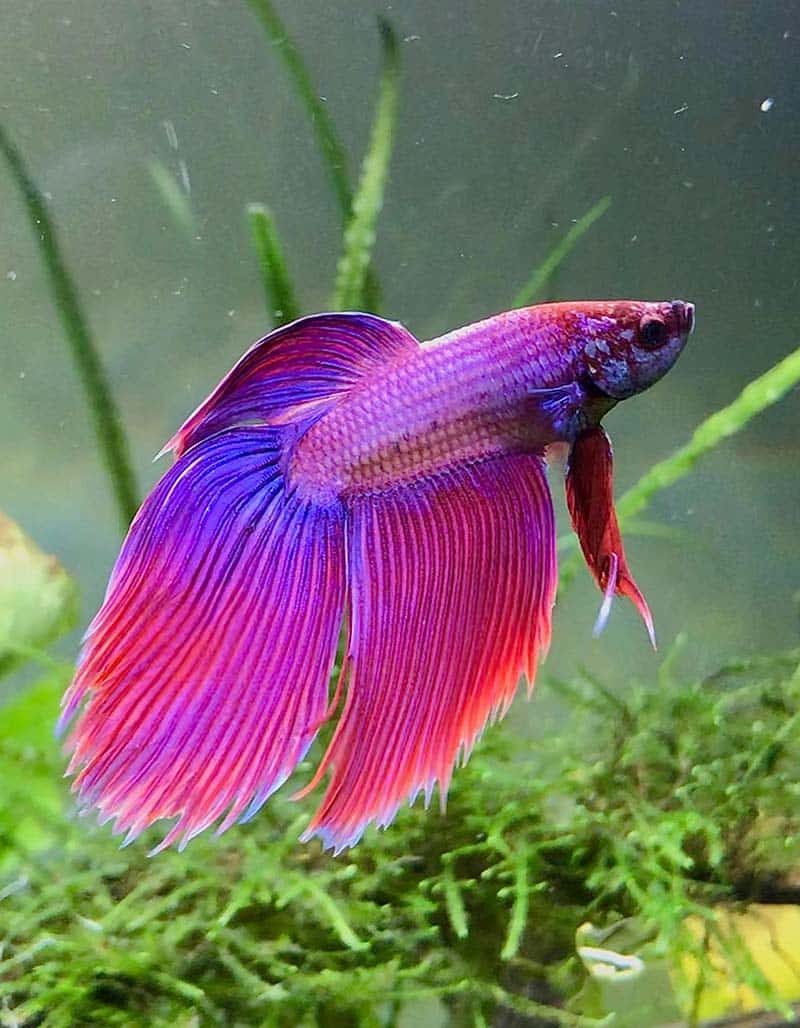

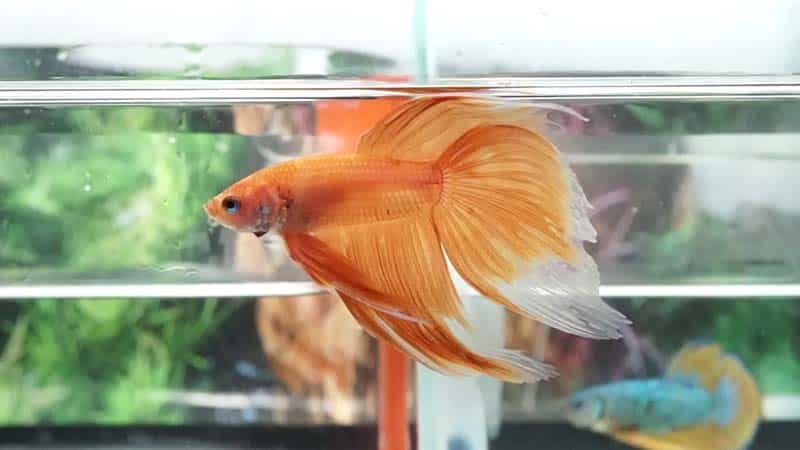
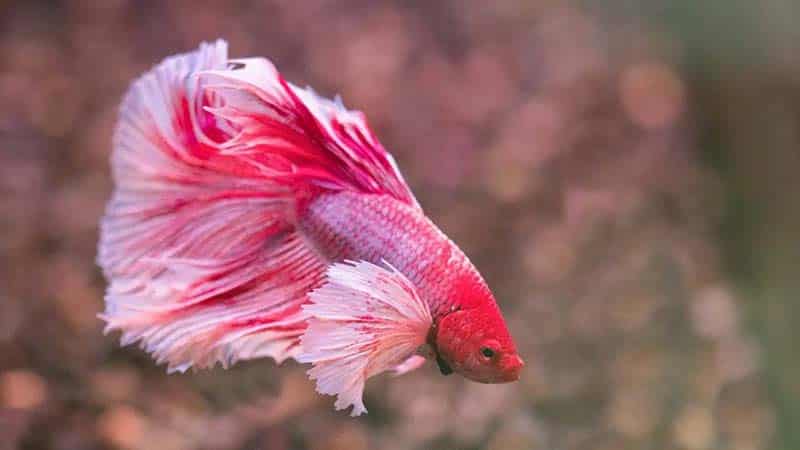
Crowntail Vs Veiltail Betta
While both Crowntail and Veiltail Betta possess enchanting allure, understanding their differences can enhance your appreciation of these aquatic wonders.
- Color: Include vibrant shades like red, blue, gold, and combinations
- Tail: Distinct with long rays that extend out, creating a crown-like appearance. Reduced webbing between rays.
- Color: Common in various shades including blue, red, and multi-colored.
- Tail: Long, flowing tail that droops down, giving a veil-like effect.
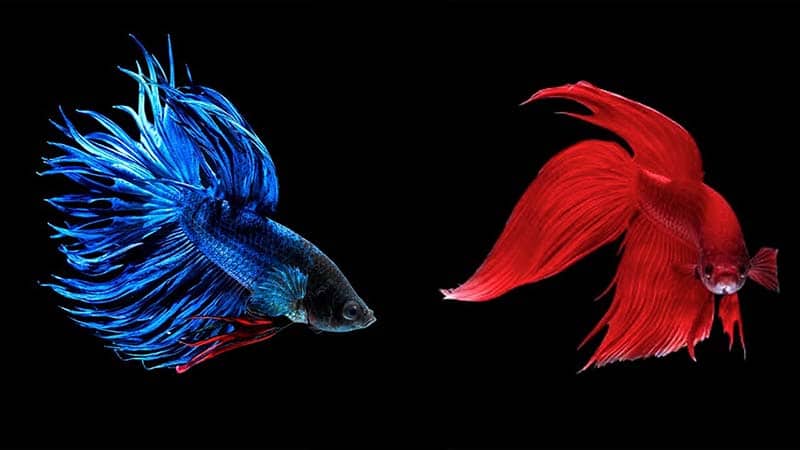
Male Vs Female Veiltail Betta
Both male and female Veiltail Betta have their unique attributes, and understanding these subtle distinctions can enhance the care and appreciation for these lovely aquatic beings.
- Appearance: Males are typically more vibrant in color and display richer, more saturated hues. Their tails and fins are longer and more flowing, making them the more flamboyant of the two.
- Behavior: While all Bettas have a territorial streak, males are notably more aggressive, especially when confronted with another male, due to their innate need to establish dominance.
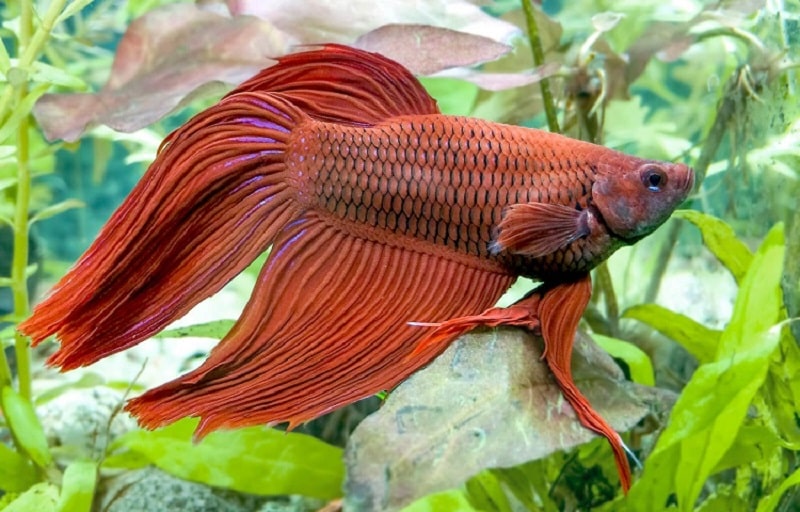
- Appearance: Females are more subdued in their coloration compared to their male counterparts. They have shorter tails and fins, but still retain the classic ‘veil’ shape.
- Behavior: Generally, females exhibit a milder temperament. While they have their moments of assertiveness, they’re less aggressive than males.
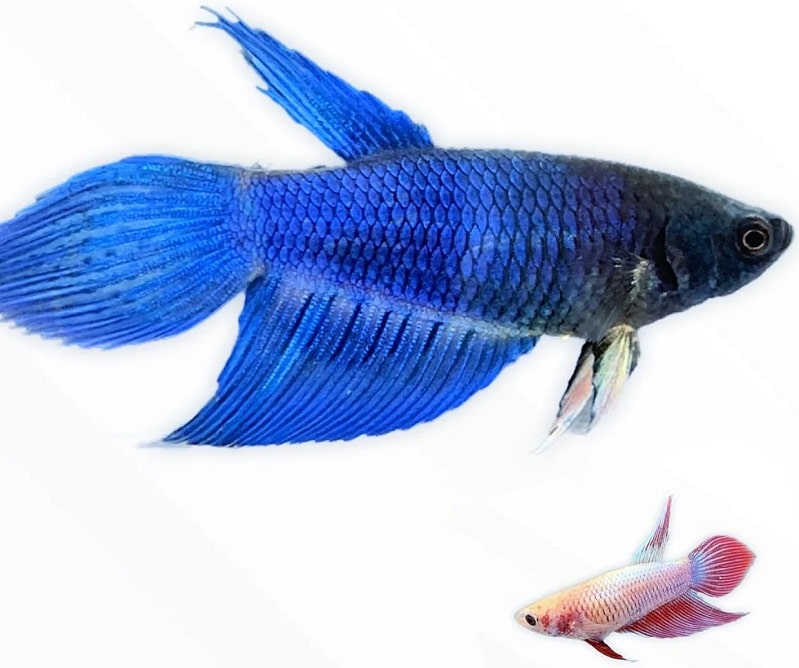
How To Keep Your Veiltail Betta Healthy?
Though they boast a decorative look, Bettas are robust and generally health issue-free. By maintaining optimal water conditions, providing a nutritious diet, and offering a serene, roomy habitat, Bettas can thrive and potentially reach or surpass a 5-year lifespan in captivity. Bright, dynamic colors, relaxed and extended fins, and a keen appetite indicate a content and flourishing Betta.
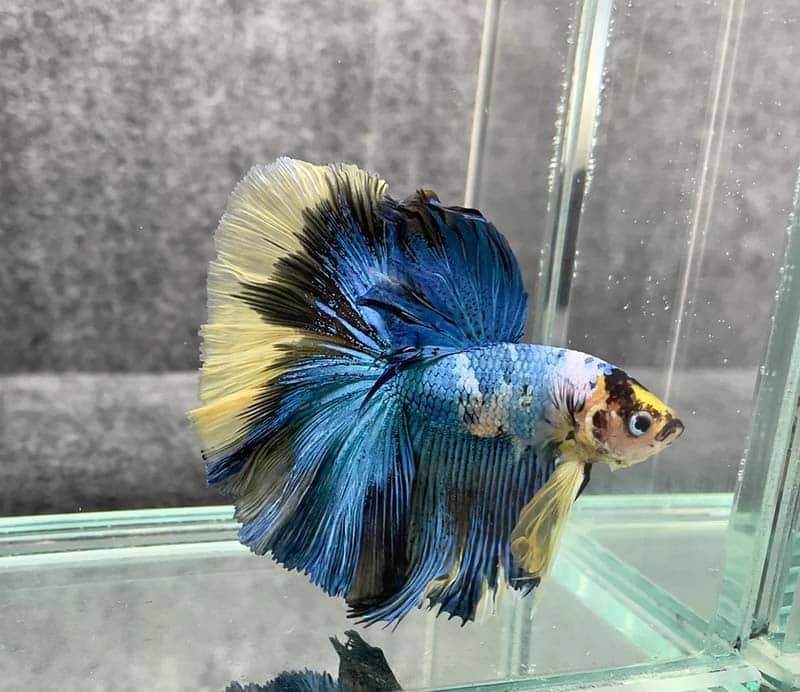
Veiltail Betta Breeding
Bettas, especially Veiltails, reproduce easily in captivity, contributing to their popularity as companions. A distinct breeding tank provides them the needed space. Males can coexist with fry until they start moving freely; afterwards, their nurturing ceases. Rearing fry requires some effort, yet with knowledge and practice, breeding Veiltail Bettas becomes a straightforward task, even for novices.
Conclusion
Veiltail Betta fish stand out as gentler, more sociable, and affable compared to other Betta variants, positioning them perfectly for mixed-species tanks. While males display aggression towards fellow male Bettas, they coexist harmoniously with other fish under appropriate conditions.




